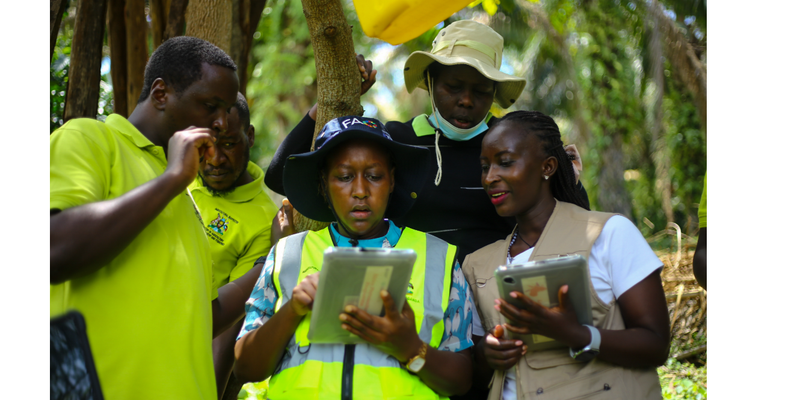FAO and IPPC Equips 50 Crop Inspectors and Researchers to Strengthen Uganda’s Digital Pest Surveillance
Posted on Fri, 10 Oct 2025, 10:03

10/10/2025
The Food and Agriculture Organization of the United Nations (FAO) has trained 50 crop inspectors and researchers in modern digital pest monitoring tools to help Uganda detect, prevent, and respond faster to plant pest invasions that threaten exports and food security.
The week-long training, conducted under the African Phytosanitary Programme (APP), an initiative of the International Plant Protection Convention (IPPC) Secretariat at FAO, marks a major step in Uganda’s transition to digital pest surveillance systems that use real-time data to protect crops and sustain the country’s competitiveness in global trade.
Organised in collaboration with the Ministry of Agriculture, Animal Industry and Fisheries (MAAIF) and the National Agricultural Research Organisation (NARO), the exercise took place in Kawanda and Kalangala District, where participants carried out field surveillance for high-risk pests such as the Red Palm Weevil, Banana Bunchy Top Disease, and Xylella fastidiosa, none of which have been detected in Uganda so far.
“This training gives Uganda a head start in using technology to protect its crops and its markets,” said Dr Joab Tugume, a senior agricultural inspector in the Department of Crop Inspection and Certification. “We can now collect and review data in real time, improving decision-making and enabling faster action when pest threats arise.”
The initiative will help Uganda meet international phytosanitary standards that govern the movement of agricultural products across borders.
Many of Uganda’s trading partners including the European Union require exporters to prove that their produce comes from pest-free zones. With digital surveillance, crop inspectors and researchers can now capture pest data using tablets linked to a centralised online platform, share findings instantly, and assure buyers of Uganda’s compliance with global plant health regulations.
“Digital pest surveillance means fewer export rejections, less guesswork, and stronger trust between Uganda and its trading partners,” said Herbert Musimenta, Principal Agricultural Inspector at MAAIF. “It’s a big win for farmers, exporters, and the economy.”
Under the APP, Uganda’s crop inspectors and researchers are being equipped with GIS-enabled tablets and specialised mobile applications to identify, map, and report pest outbreaks in real time.
The system also provides early warning alerts that help authorities and farmers act before pests spread widely.
“Once a pest spreads, the cost of eradication is enormous,” said Prof Arop Deng, a consultant with the IPPC Secretariat and technical lead for the programme. “By investing in prevention through digital monitoring, Uganda is saving millions that would otherwise be lost in emergency response and export restrictions.”
The training follows months of pest-related losses in Kalangala’s oil palm plantations, where infestations by nettle caterpillars drastically reduced yields.
For farmers like Abdul Mutazindwa, who saw his harvest fall from 1,000 tonnes to just 50 tonnes, digital monitoring brings renewed hope. “With these new tools, we believe outbreaks will be spotted and managed early,” said David Balironda, General Manager of the Ssese Oil Palm Growers Cooperative Society (SOPAG). “That gives farmers confidence to keep investing in their plantations.”
According to the National Planning Authority, agricultural exports account for nearly half of Uganda’s total export earnings.
FAO’s support for digital surveillance is therefore not just a plant health initiative, it’s a safeguard for livelihoods, trade, and food security. The APP also complements Uganda’s broader efforts under FAO’s global “Better Production, Better Environment” framework, which promotes innovation and data-driven approaches in agriculture.
“FAO’s support helps Uganda protect its agriculture with science, not chance,” said Dr Tugume. “With real-time data, we can reassure trading partners, protect farmers’ incomes, and sustain our export growth.”
By the end of the programme, all 50 crop inspectors and researchers were certified to operate the new digital systems and contribute to the national pest surveillance database, strengthening Uganda’s capacity to prevent costly outbreaks.

